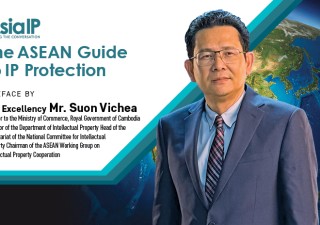Caution: Groundless Threats Ahead
14 September 2012

After climbing the procedural rungs to attain an IP registration, there is no rest for the weary owner as he must remain vigilant post-registration to ensure his rights are not breached. IP owners who are not fully aware of their rights are hesitant to enforce them against infringers. On the opposite end, there are owners who are often trigger-happy going after IP culprits on slightest suspicion.
To curb this dangerous trend, the proposed Malaysian Trade Marks Act (Section 56) and Patents Act 2011 (Section 61C) will ensure that victims of groundless threats of infringement are provided appropriate remedy. The provisions are adopted direct from the words of the United Kingdom’s Trade Marks Act 1994 (Section 21) and Patents Act 1977 (Section 70) respectively, and therefore should be appropriately adapted based on local IP practices before being sound law.
Section 56(1) provides three situations where threats of trademark infringement proceedings are acceptable – applying a mark to goods or to material used or intended for labeling or packaging; the importation of goods or packaging on which the mark has been applied; and the supply of services under the mark. This is consistent with the current definition of “infringement” under Section 38 of the Trade Marks Act 1876, i.e. unauthorized use of an identical or similar mark in relation to goods or services in respect of which the trademark is registered so as to likely deceive or cause confusion in the course of trade.
To keep it open-ended, any reasons for threatening legal actions other than the three mentioned in Section 56(1) would be deemed by the new Act as groundless and any person (whether or not he is the person to whom the threat are made) aggrieved by such threats may bring proceedings for relief under said section. Some of the proposed remedies to be made available include a court declaration that the threats are unjustifiable, an injunction against the continuance of such threats, and/or damages in respect of any loss the aggrieved person has sustained by the threats. The entitlement to any such relief is as of right for the plaintiff unless the defendant discharges the burden of showing that the acts (to which proceedings were threatened) constitute or if done would constitute an infringement of his registered trademark. Nonetheless, the aggrieved person is entitled to relief if he shows that the trademark registration is invalid or liable to be revoked in a relevant respect.
Trademark owners can take comfort that Section 56 is not intended to curtail any genuine and reasonable warning of infringement. It qualifies that mere notification that a mark is registered or that an application for registration has been made does not constitute a threat of proceedings. In addition, practitioners (specifically advocates and solicitors) will not be held liable for making such threats in his professional capacity and in execution of his client’s instructions.
It is the writer’s opinion that the new Section 56 can be enhanced by taking a leaf from the page of Section 61C of the new Patents Act, which is broader in scope but yet kinder to the IP stakeholder like its UK version. Without going into the statutory intricacies, suffice to say Section 61C provides more explanation on the person threatening, the person aggrieved and the modes of threat. The claimant in proceedings for groundless threats of infringement is imposed with a higher burden of proof. There are also a number of circumstances where proceedings under Section 61C cannot be brought or considered non-threatening actions. The section applies to threats made in relation to a pending patent as well.
As practitioners, it is our incumbent duty to ensure our clients do not act rashly. By all means, their rights should be enforced against actual infringers but commencing frivolous suits is a major risk. It is even riskier for owners to send out cease and desist letters to various suspects without careful investigation and advice as they could backfire in the form of defamation suits – see Soh Huang Siah v. Datuk Ooi Han Eng & D’Touch Promotion Sdn Bhd [2011], for example – or proceedings under the said Sections 56 or 61C when they are passed by the Parliament later.
Henry Goh & Co
House of Henry Goh,
217 Jalan Imbi,
55100 Kuala Lumpur, Malaysia
T: +60 3 2118 8688
F: +60 3 2118 8777
E: hgoh_kl@henrygoh.com
W: www.henrygoh.com






